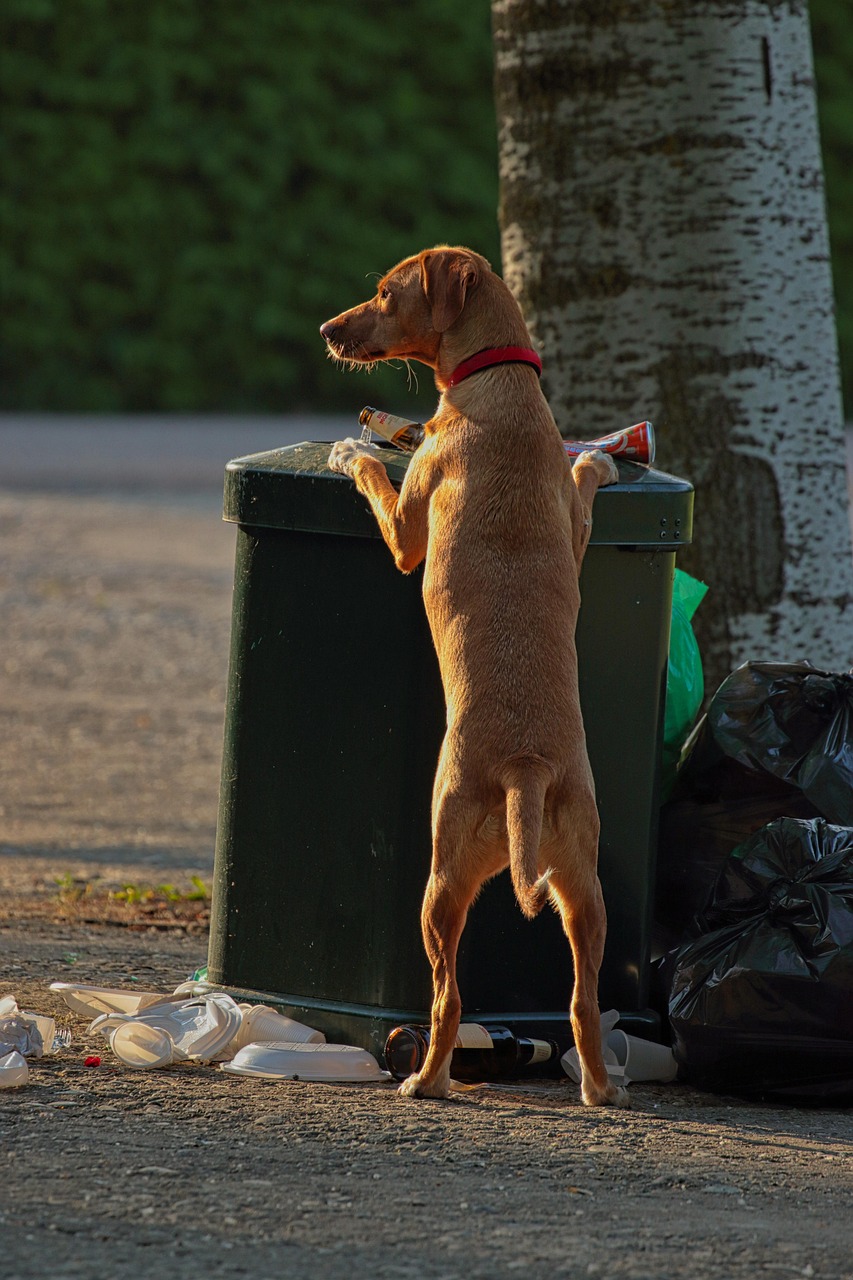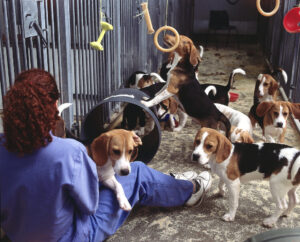The scent of a dog is faintly musky, sometimes earthy, occasionally offensive—can conjure images of loveable paws padding around the home. But when that aroma transitions from cozy to overwhelming, it becomes a silent intruder in your living space. Whether it’s embedded in your carpets, wafting from the furniture, or stubbornly clinging to your car seats, dog odor doesn’t just announce itself—it lingers. The real challenge? It’s layered, persistent, and rooted in both biology and environment. This guide cuts through the fluff with scientifically backed methods, practical solutions, and preventative strategies to reclaim the freshness of your home without sacrificing a moment of companionship.
Table of Contents
Why Dogs Smell?: Sources of Pet Odors
Dog odors stem from a complex interplay of biology, environment, and habits. Natural oils secreted through their skin, sweat glands located between paw pads, and microbial buildup in ears and mouths all contribute. Add in outdoor dirt, allergens, saliva, anal gland secretions, and occasional “accidents,” and you’ve got a bouquet of persistent scents. Certain breeds are more prone to odor due to oily coats or skin folds. Understanding the root causes—biological secretion, poor hygiene, dietary effects, and health issues—is critical to targeting the source rather than just masking the symptoms.
Quick Solutions for Immediate Dog Odor Relief
When guests are minutes away and your house smells like wet fur, speed matters. First, ventilate—open windows and turn on fans. Next, use an enzymatic spray (like Nature’s Miracle) on hotspots like dog beds or favorite lounging areas. For furniture, baking soda is your friend—sprinkle generously, let sit, then vacuum. Dog wipes can refresh your pup quickly, especially the face, paws, and underbelly. A few drops of pet-safe essential oil in a diffuser can also neutralize odors temporarily while adding a pleasant scent.

Deep Cleaning Techniques to Eliminate Dog Smell
Surface cleaning only scratches the scent. For lasting odor elimination, go deep. Start with steam-cleaning carpets using pet-formulated detergents. Wash all washable fabrics—blankets, cushion covers, dog beds—in hot water with vinegar and baking soda. For non-washables, apply fabric-safe enzyme sprays. Walls and baseboards? Wipe down with a vinegar solution. Don’t forget HVAC systems; change filters and consider a duct cleaning if odors persist. Monthly deep cleans, paired with spot treatments, can uproot the embedded odor molecules.
Best Products for Removing Dog Odor from Furniture and Carpets
Look for enzyme-based products—they digest organic odor sources instead of masking them. Highly recommended: Rocco & Roxie Professional Strength Stain & Odor Eliminator, Bissell Pet Pro Oxy Formula, and Angry Orange Odor Eliminator. For carpets, Hoover Paws & Claws Carpet Cleaner Solution pairs well with most machines. Upholstery-specific sprays like Febreze Fabric Pet Odor Eliminator provide targeted relief. Always patch-test before widespread use to prevent fabric damage or discoloration.
Natural Remedies for Dog Smells: Eco-Friendly Solutions
Nature offers powerful deodorizers. Baking soda absorbs smells—sprinkle and vacuum. White vinegar neutralizes odor-causing bacteria—use as a spray or in laundry. Activated charcoal traps airborne particles and is great for small spaces. Lemon juice cuts through grease and leaves a fresh scent. Mix lemon juice, vinegar, and water in a spray bottle for a DIY cleaner. Essential oils like lavender and eucalyptus (in diluted, pet-safe forms) can be used sparingly in diffusers. Avoid tea tree and citrus oils directly on dogs—they can be toxic.
How to Remove Dog Smell from Specific Surfaces (Carpets, Furniture, Bedding)
Each surface demands a tailored approach. For carpets, enzyme cleaners followed by steam cleaning work best. Furniture? Use upholstery-safe sprays and clean removable covers in hot water. Bedding should be washed weekly with baking soda and vinegar in the wash cycle. For leather furniture, use a damp cloth and pet-safe leather conditioner. Hardwood floors require gentle cleaning with a vinegar-water mix—avoid saturating. For persistent smells, sprinkle baking soda overnight and vacuum in the morning.
Preventing Dog Odors: Daily Maintenance Routines
Consistency is key. Brush your dog daily to reduce dander and loose fur. Wipe paws and underbelly after walks, especially during wet weather. Clean bowls and toys weekly—they harbor bacteria. Vacuum high-traffic areas and dog zones every two days using a HEPA-filter vacuum. Use washable covers on furniture and wash them weekly. Set a cleaning calendar to rotate tasks, and consider a robot vacuum for daily hair and dander collection. Prevention is less about big actions and more about frequent, focused habits.
Dog Grooming Practices to Reduce Pet Odors
Regular grooming minimizes odor. Bathe your dog every 4–6 weeks using a mild, pH-balanced pet shampoo. Overbathing can strip natural oils and cause skin issues, increasing odor. Brush coats daily to remove dirt and dead skin. Clean ears weekly—use vet-approved solutions to avoid infections. Trim nails and clean paw pads to remove trapped dirt. For breeds with facial folds (like Bulldogs), clean folds with a damp cloth every few days. Professional grooming every couple of months ensures deep hygiene and early detection of issues.
Air Purifying Systems and Their Effectiveness Against Pet Smells
Not all air purifiers are created equal. Look for models with HEPA filters and activated carbon—this combo traps pet dander and neutralizes odor molecules. The Levoit Core P350 and RabbitAir MinusA2 are top picks among pet owners. Position purifiers in main living areas and near dog beds for best results. Supplement with air-exchanging systems (vent fans or cracked windows) to boost air circulation. Avoid ozone generators—they can be harmful to pets and people.
Dealing with Urine Accidents: Complete Cleanup Guide
Dog urine isn’t just a smell—it’s a biohazard. First, blot with paper towels—don’t rub. Next, saturate the area with an enzymatic cleaner (like Nature’s Miracle or Simple Solution). Let it sit per label instructions—this allows enzymes to break down uric acid crystals. For carpets, use a wet vacuum (never a steam cleaner—it sets the stain). On hard floors, mop with a vinegar-water solution. Check with a blacklight to ensure full removal—urine glows under UV light. Repeat if needed. Finish with a pet odor neutralizer spray.
Specialty Tools for Pet Odor Removal
Innovative tools make odor removal easier. UV flashlights detect invisible urine spots. HEPA-filter vacuums (Dyson Animal, Shark TruePet) trap dander and hair. Carpet extractors like Bissell ProHeat 2X lift deep odors. Ultrasonic diffusers with pet-safe oils freshen air gently. Consider a steam mop with washable pads for non-carpeted surfaces. Auto-spraying air fresheners (like Pet House Room Sprays) offer low-maintenance scent boosts. Having a dedicated pet-cleaning toolkit streamlines your weekly routines.
When to Call Professionals: Severe Odor Problems
Some odors defy even your best efforts. If the smell persists after thorough cleaning, professional services may be needed. Carpet cleaners use industrial-grade enzymes and hot-water extraction. Odor remediation specialists tackle issues inside walls, ducts, and under floors. If moving into a home with previous pet occupants, professional ozone treatment can reset the air. When the scent suggests mold, decay, or unknown sources, call in a pro to diagnose and treat comprehensively. It’s an investment in home health and comfort.
Best Practices for Multi-Dog Households
More dogs mean more scent sources. Create designated lounging zones with washable covers. Stagger grooming schedules to avoid bath overload. Feed high-quality diets to reduce smelly excretions. Rotate toys and bedding for regular washing. Use separate bowls and mats to control mess. Invest in large-capacity air purifiers and consider floor mats under beds and furniture to protect surfaces. Set up a doggy cleaning station near entrances to intercept dirt before it spreads.
Removing Dog Smell from Cars and Small Spaces
Cars trap odors tightly. Start by removing all fabric surfaces and washing them—seat covers, mats, blankets. Vacuum thoroughly, especially under seats. Use car-specific enzyme sprays and place charcoal bags under seats. For lingering smells, use an ozone generator (car-safe) while the vehicle is unoccupied. Keep windows slightly cracked when parked. For small spaces like offices or dens, plug-in air purifiers or pet odor diffusers (like Febreze Pet Plug-Ins) work well. Regular airing out is vital.
Seasonal Considerations for Pet Odor Management
Seasons affect smell. In winter, closed windows reduce air flow—use more purifiers and wash gear frequently. Spring brings shedding—vacuum daily and groom more often. Summer increases outdoor play—wipe dogs down after walks and clean water bowls daily. Fall adds mud and moisture—mats and paw wipes become essential. Adjust your cleaning schedule with the seasons to stay ahead of scent buildup. Store seasonal gear properly—don’t leave muddy boots or wet towels near pet zones.
Common Mistakes to Avoid When Tackling Dog Odors
Avoid masking with sprays alone—it creates a layered, more complex odor. Don’t skip deep cleaning—surface efforts don’t cut it. Never use ammonia-based cleaners—dogs confuse it with urine and may re-mark. Don’t ignore bedding and toys—they hold high scent loads. Skipping grooming leads to buildup of oils and bacteria. Lastly, overusing scented candles or diffusers can irritate dogs’ sensitive noses and even lead to respiratory issues. Stick to proven, pet-safe methods.
Addressing Dog Smell Due to Health Issues
Persistent odors may indicate underlying health problems. Bad breath could signal dental disease. Foul-smelling skin might mean infections, allergies, or seborrhea. Anal gland issues emit a fishy scent—these need veterinary expression. Frequent ear odor? Check for mites or yeast infections. If your dog’s smell changes suddenly or dramatically, consult a vet. Medical intervention often resolves the odor at its root. Regular checkups catch problems early before they become olfactory nightmares.
DIY Deodorizing Sprays and Solutions
Making your own pet-safe sprays is budget-friendly and eco-conscious. Try this mix: 2 cups water, 1 tbsp baking soda, 10 drops lavender essential oil (diluted). Shake and spray on fabrics or in the air. Another option: equal parts vinegar and water for hard surfaces. For carpets: combine 1/2 cup cornstarch, 1/2 cup baking soda, and a few drops of pet-safe oil—sprinkle, let sit, vacuum. Always label your concoctions and store away from pets. Test first to avoid discoloration.
Dog-Safe Home Fragrances and Masking Techniques
Masking should complement, not replace, cleaning. Use soy-based, pet-safe candles like those from Pet House Candle. Plug-in diffusers with controlled release, like Air Wick Botanica, offer subtle scenting. Simmer pots—water with cinnamon sticks and apple slices—freshen air naturally. Avoid synthetic sprays with phthalates or alcohols. Fabric sprays should be non-toxic and designed for pet homes. A combination of scent layering and airflow control works best. Less is more—dogs’ noses are powerful.
Maintaining an Odor-Free Home: Long-Term Strategies
Create a sustainable system. Stick to a weekly cleaning schedule that includes floors, fabrics, and pet gear. Groom consistently and address health issues proactively. Invest in tools like air purifiers and upholstery steamers. Use washable décor elements—rugs, throws, pillow covers. Feed a clean, balanced diet to minimize odor-causing excretions. Periodically reassess your cleaning arsenal—swap ineffective products. Incorporate natural deodorizers and keep your home well-ventilated year-round. The goal is a balance between freshness and comfort—where your love for your dog doesn’t cost your nose.
Maintaining a home that smells clean and welcoming—despite sharing it with a dog—isn’t about perfection, it’s about persistence. With the right blend of daily habits, smart products, and deep cleaning rituals, dog odor doesn’t stand a chance. And when the tail wags, and your space still smells like fresh laundry instead of fur, you’ll know the effort is worth every scrub.
- Smelly House Because of Dog? Take These Hygiene Tips - May 20, 2025
- How to Introduce a Dog To a Cats Without Chaos - May 6, 2025
- 4 Best Cavapoo Rescues in the UK 2024 - April 5, 2024








